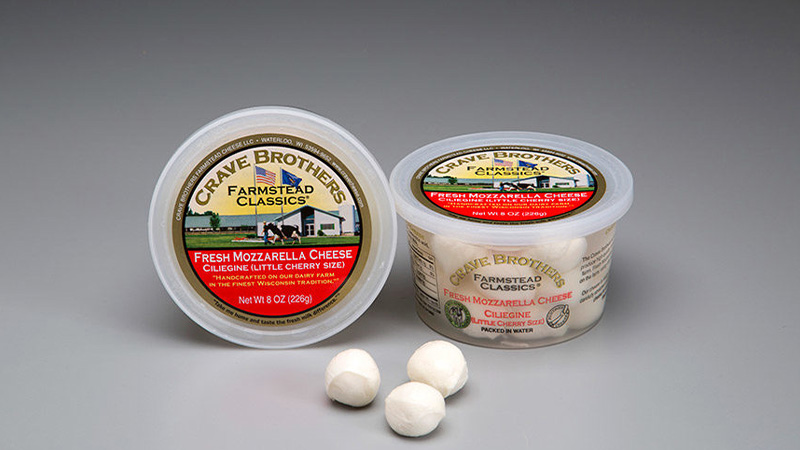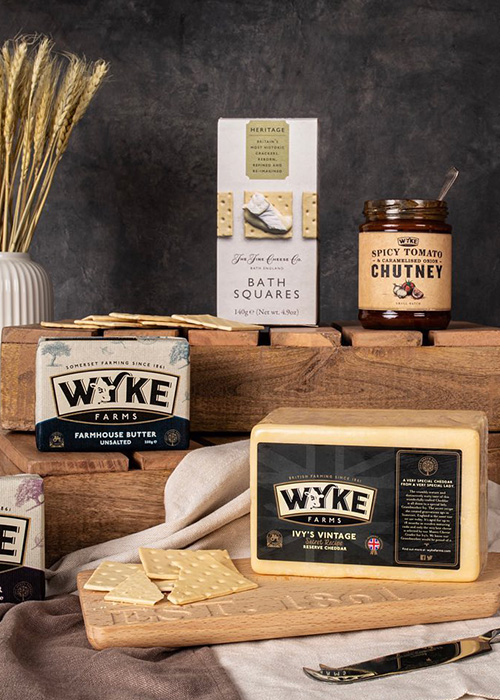Discussions of cheese’s impact on the environment tend to skip big-picture discussions concerning the industry and go straight to individual choice. This is particularly the case online, as the internet teems with articles and blog posts urging people to chop cheese from their lives for the good of the planet. While these urgencies have noble intentions, the solutions they produce are ones that only work on a small, individual scale.
The cheesemakers residing in the category’s craft, artisan, and farmstead sector aren’t fond of this approach to saving the planet. However, this disdain has little to do with potential impacts to their bottom line; they feel these solutions inadvertently gloss over the push for environmental change they’re conducting from within the industry. It’s a push that attempts to connect an eco-conscious mindset with cheesemaking’s pastoral roots, with cheeses created in ways that honor the land and its people.
“We believe that good cheese comes from good milk, and good milk reflects our surroundings,” says Christy Khattab, marketing director for Cowgirl Creamery in Point Reyes Station, Calif. “Thoughtful dairy farming can be a vehicle for good. This ideal has always been our mission.”
Don’t miss a drop!
Get the latest in beer, wine, and cocktail culture sent straight to your inbox.
Using Bad for Good
In some ways, cheese is an edible bystander in the enmity between this slice of the dairy industry and those who shun it in the name of the environment. The true culprit is cheese production, and its lynchpin is methane, the greenhouse gas emitted by the backside of dairy producing cows. Math explains its potential for environmental villainy: It takes roughly 10 pounds of milk to create one pound of cheese, and the average dairy cow produces enough milk for about five pounds of cheese each day. Clearly, producing enough cheese to enter the retail space requires a lot of cows — the average American dairy herd averages around 300 in size. This translates to a lot of cow manure, which contains copious amounts of methane, a gas that leaves a carbon footprint larger than that of carbon dioxide.

This process looks devastating on paper. Yet in the hands of eco-conscious cheesemakers that recognize the methane dilemma, the notorious gas can be used for good. In Waterloo, Wisc., Crave Brothers Farmstead Cheese uses its farm’s cow manure to supply energy to the neighborhood using an anaerobic methane digester system. Installed in 2009, the computer-controlled device features a pair of cylindrical, domed tanks that process the methane gas from the property’s collected cow droppings and convert it to energy. “They look like giant crock pots,” says Crave Brothers’ marketing manager Roseanne Crave. Today, the twin 750,000-gallon tanks create enough renewable energy to power Crave Brothers’ farm, its cheesemaking factory, and about 300 area homes.
“It was an expensive leap of faith when we had the system installed back in 2009,” Crave explains. “But our unofficial motto around here is ‘we were green before green was groovy.’ This doesn’t just mean making better cheese. It also means doing better for the land, the animals, and the community.”
Pointing to a Bigger Picture
The tactics sustainable and environmentally focused cheesemakers use to promote their efforts tend to be visible yet modest, such as website pages or clever packaging graphics. Wyke Farms in Bruton, Somerset, U.K., recently decided to push beyond these usual channels. In January, the multi-generational cheese producer’s flagship cheese, Ivy’s Reserve Vintage Cheddar, received certification as the world’s first carbon-neutral cheddar. The distinction, which was gained through a collaboration between Wyke Farms and the British independent certification organization Carbon Trust, verifies the farm produces the cheddar in a manner that offsets greenhouse gas emissions through an emissions-reducing program known as carbon credits. According to Wyke Farms’ managing director Rich Clothier, the purpose behind the certification went beyond self-recognition. “We wanted to do something demonstrably disruptive to the industry, particularly since the dairy industry in the U.K. has been criticized for its practices,” he says. “We went through the certification process because we wanted to show we care about the environment, but we also wanted to use it to encourage others in the industry to stand up and do something.”
The plan seems to be working. Clothier notes that British Prime Minister Boris Johnson has referenced Ivy’s Reserve on the floor of Parliament when discussing the U.K.’s ongoing environmental efforts. He hopes that such discussions will not only help drive attention to Wyke Farms’ other environmentally friendly practices — it also utilizes a methane-to-energy anaerobic digestion system, for instance — but to shine a brighter light on the importance of furthering industry sustainability as well. “The key to the future is to keep an open mind and embrace self-sufficient practices,” he says. “Doing good by the environment will make our industry stronger.”

Staying Committed
Sue Conley and Peggy Smith embedded a philosophy of sustainability, community, and environmental awareness into their business model when they launched Cowgirl Creamery in 1997. Actions such as visibly promoting the sustainable agricultural practices of their local farming partners and sourcing organic milk from pasture-raised cows was heady stuff in the late ‘90s, when climate change and going green were discussed in less urgent tones than they are now.
Twenty-five years later, the pioneering brand has become an ideal model of how a company can grow without sacrificing its core values. Cowgirl’s acquisition by Swiss cheese giant Emmi in 2016 primarily went smoothly because the parent company shared a commitment toward sustainability and eco-friendly practices. While Conley and Smith retired last year, Khattab points to ongoing relationships with local like-minded dairy farmers and agricultural preservation groups in Marin and Sonoma Counties as proof of the duo’s continuing legacy — one they remain steadfast in preserving for the sake of their regional and retail communities. “Being a fully organic company is a large commitment and investment,” Khattab says. “This is important to us and our environmental role, but also in creating and maintaining trust in our customers.”
The Future of Eco-Friendly Cheese
Despite the practices of sustainably minded cheesemakers, the inaction of other producers — and the potential damage such inaction can cause — is still strong enough to repel people from the category entirely. This exodus can be a source of frustration among the producers seeking to protect the environment, but it also sparks an urgency to engage people on the efforts coming from inside the industry, albeit delicately. “We never want to argue with those who think all cheese is bad, because that doesn’t get you anywhere,” Crave says. “Rather, we want to try and educate them by sharing what we’re doing.”
To cheesemakers committed to moving the industry toward a more sustainable path, these types of conversations play a critical role in the field’s future. As they see it, every person who rejects cheese to save the planet represents one less reason for cheesemakers engaging in non-sustainable practice to change their ways. As such, these educational forays aren’t pleas to try and gain more customers. Rather, they’re a conduit to strengthen the voice of positive change within an industry that increasingly needs to listen.
“If you care about the environment, stay at the table,” Clothier says. “Be selective with what you buy. Ask stores about carrying more sustainable cheeses. Don’t leave the argument. And if you have left the argument, come back and argue for change.”


